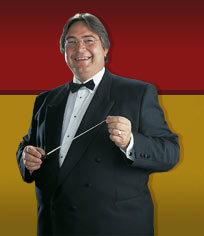A daily routine is important to the serious brass player; it acts as a check-up or regular work-out. Its purpose is to check most of the techniques involved in brass playing are ready for use and up to standard, whilst also developing various other techniques.
Most diligent students practice daily for long periods. However, they sometimes get obsessed with a particular study or concerto and spend all their time on it. They can easily find that after a few days of this focused application they have seriously neglected one or two vital facets of their playing.
The purpose of a daily routine is to exercise all techniques a little every day. It is rather like a carpenter sharpening all the tools in his toolbox even though the possibility that he will use them all in one day is remote. The reason for keeping all the tools sharp is just in case he might need them Ė the idea is to be prepared!
My daily routine lasts for about 50 minutes. I begin with a warmĖup which can take anything from 2 minutes to 15 minutes depending on the time of day it is or what I was playing the day before. I find it difficult to play early in the morning and I also find it takes me longer to get going if Iíve done a lot of strenuous playing the previous day. The bulk of my routine consists of the following exercises from the Arban Cornet Method. (p=page e=exercise.)
Tone and Breath Control p.12 e.7&8
Breathing and Production Exercises p.13&14 e.11&16
Small Intervals p.21&22 e.47&50
Stylistic Syncopation Etudes p.24 e.9
Single Tongue Studies p.26 e.13, p.28 e.18 & p.31 e.27, p.35 e.36
Exercises using the Slur p.41 e.14&15, p.55 e.68
Scales (various )
Chromatics & Diaphragmatic work p. 76 e.1, p.77 e.5, p.78 e.6
Finger Studies p.91 e.1
Mixed Intervals p.125 e.1 (1st & last line)
Embouchure Building Studies p.94 e.4
Triple Tonguing p.159 e.16, p.163 e.35
Double Tonguing p.187 e.17
Practice in different clefs
After Iíve finished my routine I tend to have a break before I practice my solos or ensemble repertoire. This part of my practice is very flexible; some days Iíll practice for hours and others Iíll do less. However, I always try to put a few minutes aside to warm-down in hope Iíll be able to leave my embouchure in the condition Iíd like to find it the next day!
The incentive for most young players to practice is so they can improve; their progress can be rapid, continual and easy to notice. Unfortunately this is not always the same for older experienced players. In many cases we practice to maintain the standard we have already achieved in hope our playing does not decline; a very different incentive altogether!
Below is a list of other study books I frequently use:
Rochut Melodius Etudes, Trognee 30 Etudes Melodious, Blazhevich Studies in Clefs, Reynolds 48 Etudes for Trumpet, Bodet 16 Etudes de Virtuosite, Gaetke 60 Studies for Trombone, Kopprash 60 Studies for Trumpet/ Horn, J.S. Bach Cello Suites, and Charles Colin Lip Flexibilities.
© Robert Childs
|
